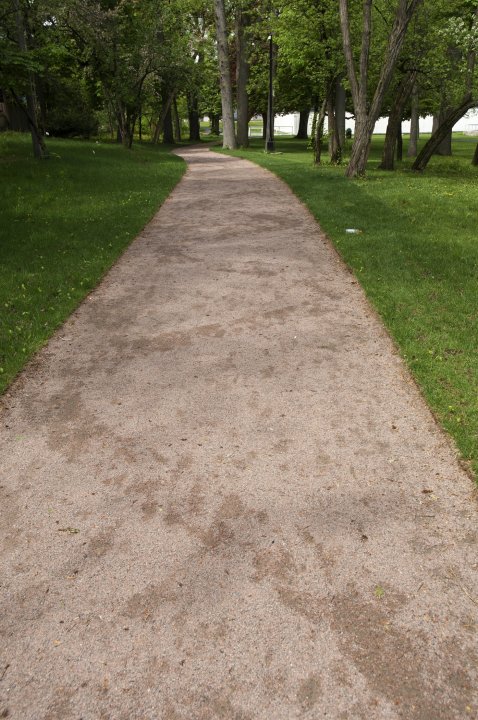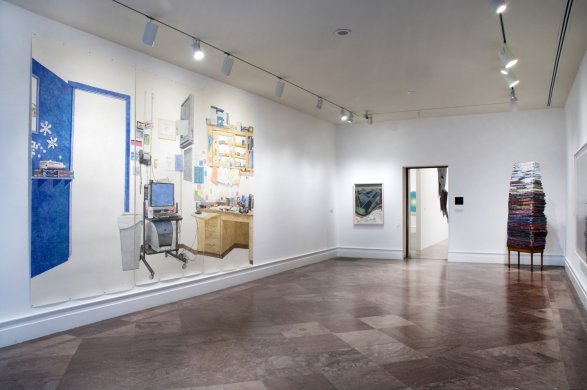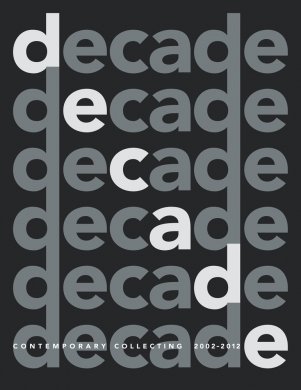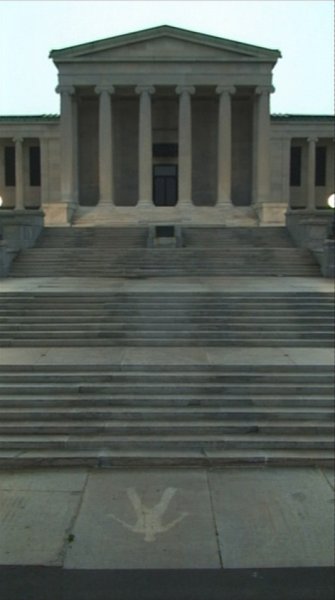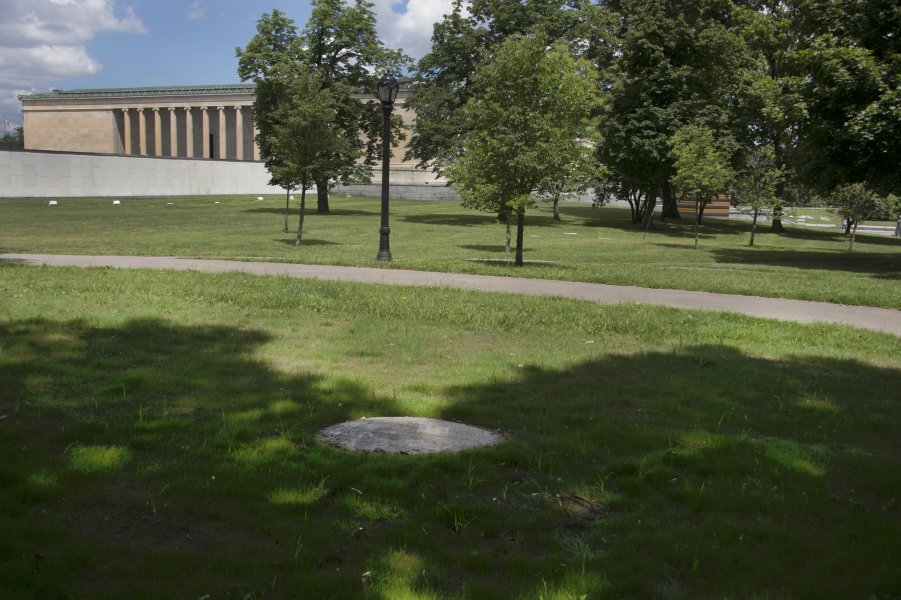Andy Goldsworthy
British, born 1956
Path, 2012-2013
Artwork Details
Currently on View
Collection Highlight
Materials
granite
Measurements
overall (length of path): 4080 x 96 x 12 inches (10363.2 x 243.84 x 30.48 cm); overall (length of curved line of pavers): 4584 x 96 x 12 inches (11643.36 x 243.84 x 30.48 cm)
Collection Buffalo AKG Art Museum
Credit
George B. and Jenny R. Mathews Fund, by exchange, Bequest of Arthur B. Michael, by exchange, Sarah Norton Goodyear Fund, Albert H. Tracy Fund, Gift of A. Conger Goodyear, by exchange, Sherman S. Jewett Fund, James H. Madison Fund, by exchange, Gift of Mr. and Mrs. Thomas Robins, Jr., by exchange and Gift of Mrs. Seymour H. Knox, Sr., by exchange, 2012
Accession ID
2012:37
This site-specific project, commissioned from artist Andy Goldsworthy by the Albright-Knox for its campus, takes the form of a gravel path set in a shaded glade on the east side of the museum. Beneath the gravel lies a snaking granite form carved by the artist. Largely invisible during dry periods, this serpentine line appears with fluctuations in temperature and precipitation, evoking a ghostly river through the woods. While the artist carried out research in advance of installing the work, he admits that “the vagaries of weather make [these changes] impossible to predict. It is also understood that the site will have a profound effect on how the work will function—the impact of which will remain unknown until the work has been . . . seen over time. These unknowns are an important part of the work and are what will make Path unique to its location.”
